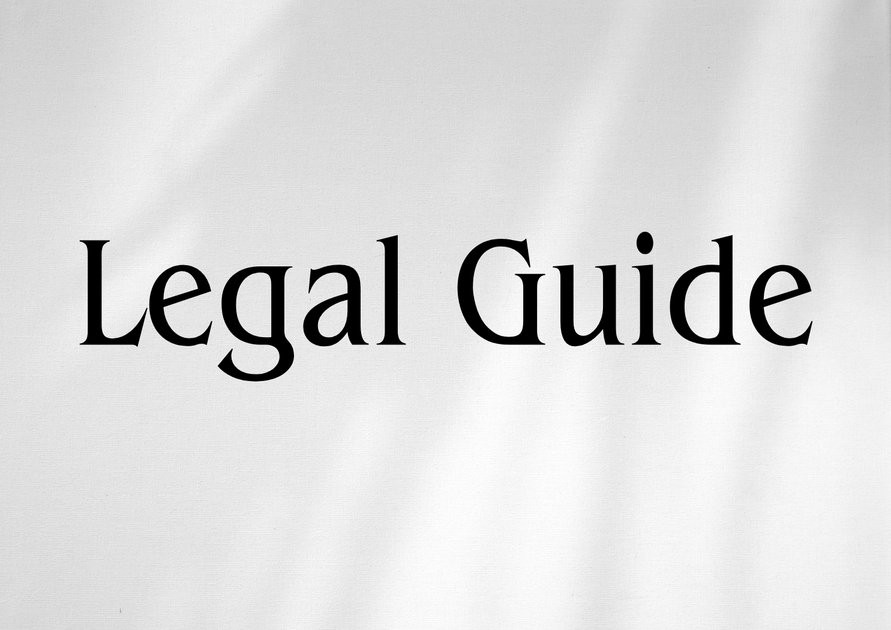Introduction: The Legal Imperative for AI Safety in the UAE
As artificial intelligence (AI) continues its rapid integration into business, government, and public life, the United Arab Emirates (UAE) stands at the forefront of legislative action addressing AI safety and compliance. In 2024–2025, landmark legal reforms and regulations have crystallized the UAE’s commitment to managing AI-related risks, ensuring technological advancement aligns with the highest standards of ethical conduct, accountability, and national security.
This article provides a comprehensive legal analysis of AI safety standards and federal compliance requirements as they pertain to businesses, executives, HR managers, and legal professionals within the UAE. Grounded in primary legal sources—such as Federal Decree-Law No. 53 of 2023 Concerning the Regulation of Artificial Intelligence (the “AI Law”), recent Cabinet Resolutions, and guidance from the Ministry of Justice and the UAE Government Portal—we unpack what these updates mean, how to achieve compliance, and the strategic imperatives for organizations operating in the Emirates. The significance of this subject cannot be overstated. As both risks and opportunities escalate through AI adoption, legal compliance has become inseparable from sound corporate governance and operational success.
Table of Contents
- Overview of UAE Law 2025 Updates on AI Safety
- Key Elements of the Federal Decree-Law and Cabinet Regulations
- Comparison: Pre-2024 Landscape vs. New AI Law
- Compliance Obligations for UAE Businesses
- Risks, Penalties, and Enforcement: What Non-Compliance Means
- Best Practices and Compliance Strategies for Organizations
- Case Studies and Hypothetical Scenarios
- Looking Forward: AI Safety, Compliance, and the Future Regulatory Landscape
- Conclusion and Recommendations
Overview of UAE Law 2025 Updates on AI Safety
The UAE’s rapidly evolving legislative framework on AI safety pivots on Federal Decree-Law No. 53 of 2023 Concerning the Regulation of Artificial Intelligence (“AI Law”), having entered into force in January 2024. The law signals a decisive shift from sector-specific guidelines to a comprehensive, federal-level legal regime that covers AI development, deployment, and oversight.
The main objectives include:
- Ensuring safe, ethical, and responsible use of AI technologies
- Protecting the rights, privacy, and safety of individuals and society
- Mitigating the risks associated with autonomous and algorithmic systems
- Facilitating innovation within a robust legal framework
Recent Cabinet Resolutions and Ministerial Guidelines supplement the AI Law by detailing sector-specific standards, certification requirements, and compliance mechanisms, reinforcing the UAE’s intent to maintain a world-class regulatory environment for AI safety.
Key Elements of the Federal Decree-Law and Cabinet Regulations
1. Regulatory Scope and Jurisdiction
The AI Law applies to all entities and individuals that develop, design, deploy, or use AI systems within the UAE, regardless of their place of incorporation. Covered sectors include finance, healthcare, education, transportation, public safety, and critical infrastructure, as defined under the law’s implementing regulations.
2. AI System Classification and Risk Assessment
One of the law’s cornerstones is the classification of AI systems based on risk profiles:
- Minimal Risk: Administrative support, automated reminders, etc.
- Limited Risk: AI chatbots, intelligent document processing.
- High-Risk: Autonomous vehicles, medical diagnosis systems, financial decision algorithms.
- Unacceptable Risk: AI applications that contravene human rights or manipulate behavior (subject to outright prohibition).
Entities are required to conduct documented risk assessments and maintain ongoing risk-monitoring protocols. High-risk AI applications must obtain pre-approval from the designated regulatory authority.
3. Licensing, Registration, and Certification Requirements
Under the AI Law and Cabinet Resolution No. 8 of 2024 on Licensing AI Activities, all developers or providers of high-risk AI systems must:
- Obtain a license or registration from the federal AI regulatory body
- Submit to pre-market conformity assessments and independent audits
- Demonstrate technical compliance with prescribed safety and ethical standards
Entities operating across free zones may face additional regulatory overlays pursuant to the relevant free zone authority policies.
4. Data Protection and Privacy Safeguards
Pursuant to the AI Law and Federal Decree-Law No. 45 of 2021 on Personal Data Protection (“PDPL”), AI systems must:
- Integrate privacy-by-design and data minimization features
- Implement robust cybersecurity protocols
- Ensure transparency in automated decision-making
- Respect the rights of data subjects (right to explanation, opt-out, etc.)
5. Human Oversight and Accountability
The law prescribes human-in-the-loop controls for high-risk AI deployments, ensuring that automated decisions with significant legal or financial effects are subject to meaningful human review. Directors and senior officers remain legally accountable for compliance failures under Articles 27–31 of the AI Law.
6. Reporting, Incident Response, and Audit
Mandatory incident reporting applies to any material failures or malfunctions of AI systems with the potential to impact public safety, national security, or individual rights. Entities must:
- Notify the regulatory authority within 72 hours of a qualifying incident
- Maintain audit trails and compliance documentation for a statutory minimum period
- Facilitate regulatory investigations and provide records on demand
Table: Key Provisions of the AI Law and Related Regulations
| Provision | Regulatory Reference | Responsible Entity |
|---|---|---|
| AI System Risk Classification | AI Law Art. 9 / Cabinet Resolution No. 8 of 2024 | Developers, Providers |
| Licensing & Certification | AI Law Art. 12/13 | Developers, Operators |
| Data Protection Compliance | PDPL Arts. 4–11 | All Data Controllers |
| Human Oversight | AI Law Arts. 27–30 | Senior Management |
| Mandatory Incident Reporting | AI Law Art. 36 | All AI Deployers |
Comparison: Pre-2024 Landscape vs. New AI Law
The comprehensive AI Law represents a significant evolution from the earlier fragmented framework of sector-specific guidelines and voluntary codes of conduct. The following table encapsulates the principal changes:
| Aspect | Pre-2024 Framework | AI Law (2024 Onwards) |
|---|---|---|
| Regulatory Authority | Multiple, sectoral | Central AI regulatory body (Federal) |
| Risk-Based System Classification | Not required | Mandatory, with distinct compliance obligations |
| Pre-Deployment Audit | Occasional or self-assessed | Mandated for high-risk AI |
| Data Protection Integration | Limited references | Integrated with PDPL requirements |
| Incident Reporting | Ad hoc or sectoral | Federally mandated for qualifying incidents |
| Penalties | Varied, undergeneral laws | Codified, with significant administrative and criminal penalties |
Visual suggestion: A penalty comparison chart illustrating the increased scope and severity of fines and enforcement after the adoption of the new AI Law.
Compliance Obligations for UAE Businesses
General Business Requirements
All organizations that use AI—whether internally or as part of their products or services—must adhere to the law’s prescribed safety, ethics, and operational standards, including:
- Conducting comprehensive risk assessments of all AI systems in use
- Registering or licensing high-risk AI activities with the federal authority
- Appointing an AI compliance officer (for large or high-risk organizations)
- Ensuring ongoing employee training on AI safety protocols
- Updating vendor and third-party management policies to address AI supplier risks
Sector-Specific Considerations
Certain sectors are subject to enhanced scrutiny under Ministerial Guidelines and Cabinet Resolutions, notably:
- Healthcare: Pre-market validation and continuous post-market surveillance for AI diagnostic or clinical software
- Financial Services: Algorithmic decision-making must meet anti-bias and explainability standards
- Public Sector: Procurement processes require AI system certification and compliance demonstration
Compliance Checklist Table
| Checklist Item | Required Action |
|---|---|
| Risk Assessment | Document for each AI system; update bi-annually |
| License/Certificate | Apply before deploying high-risk systems |
| Data Privacy | Integrate PDPL compliance into AI workflow |
| Training | Annual mandatory staff training on AI safety |
| Incident Response Plan | Establish and test procedures for system failures |
Visual suggestion: Flow diagram of the AI compliance process, from risk assessment to licensing and ongoing monitoring.
Risks, Penalties, and Enforcement: What Non-Compliance Means
The AI Law adopts a proportional enforcement policy, but penalties for non-compliance are substantial. Key risks and penalties include:
- Monetary Fines: For major breaches (unlicensed AI, inadequate oversight), fines may exceed AED 5,000,000 per incident (AI Law Art. 53).
- Criminal Liability: Reckless or intentional failures leading to harm may trigger personal liability for directors and officers, with potential imprisonment (AI Law Arts. 54–56).
- Administrative Sanctions: Suspension of licenses, blacklisting from public procurement, or mandatory system shutdowns for aggravated violations.
- Civil Liability: Damages claims by affected individuals or business partners for breaches of AI safety duties.
Table: Examples of Breaches and Corresponding Sanctions
| Breach | Reference | Possible Penalty |
|---|---|---|
| Deployment of unlicensed high-risk AI system | AI Law Art. 53 | Up to AED 5M fine, business suspension |
| Failure to report a qualifying AI incident | AI Law Art. 36 | AED 500,000–1M fine, increased scrutiny |
| Inadequate data protection measures | PDPL Arts. 20–23 | AED 500,000 per data subject affected |
| Absence of human oversight for high-risk AI | AI Law Art. 30 | License suspension, director liability |
Best Practices and Compliance Strategies for Organizations
Legal Consultancy Recommendations
- AI Governance Frameworks: Establish governance structures anchored by clear policies, board oversight, and periodic legal review—as required under the AI Law and Ministry of Justice guidelines.
- Documentation and Record-Keeping: Maintain comprehensive records of risk assessments, compliance checks, and internal decision-making (AI Law Art. 20, PDPL Art. 17).
- Role of the Compliance Officer: Appoint an AI compliance officer with legal, technical, and ethical expertise. Empower this role to oversee training, incident response, and regulatory liaison.
- Third-Party Management: Review supplier contracts to ensure that all third-party AI systems meet UAE legal standards. Negotiate indemnity clauses where feasible.
- Staff Training and Awareness: Design and mandate training that is updated annually and tailored to each staff member’s AI exposure and responsibility.
- Crisis and Incident Response: Develop, document, and rehearse incident escalation and response plans in line with federal requirements.
Practical Workflow Table: Steps to Achieve AI Law Compliance
| Step | Key Task | Stakeholder |
|---|---|---|
| 1. Identify AI Uses | Map all internal/external AI deployments | IT/Legal |
| 2. Classify Risk | Allocate risk tier per AI Law | Compliance |
| 3. Conduct Impact Assessment | Document impacts on rights, safety, privacy | Risk/Compliance |
| 4. Register/License | Submit applications to AI authority | Legal/Admin |
| 5. Ensure Data Protection | Integrate PDPL-compliant processes | Data Privacy Officer |
| 6. Implement Human Oversight | Install review and override mechanisms | Management/IT |
| 7. Set Up Monitoring and Audit | Continuously monitor, document, and audit | Internal Audit/Compliance |
| 8. Incident Reporting Preparedness | Test and update response plans | Compliance/Legal |
Case Studies and Hypothetical Scenarios
Case Study 1: FinTech AI Algorithm Fails to Detect Bias
A leading Dubai-based bank deploys an AI-driven credit risk assessment tool, which inadvertently discriminates against certain demographics. The AI compliance officer discovers the issue during a routine audit and immediately reports it to the regulatory authority within the 72-hour window. Following investigation, the authority mandates remedial action, the issuance of an updated risk assessment, and the completion of staff retraining in AI ethics and bias mitigation. Fines are significantly reduced due to voluntary disclosure and transparent cooperation.
Case Study 2: Healthcare Provider Deploys Unlicensed Diagnostic AI
An Abu Dhabi hospital introduces a new AI-based radiology tool without obtaining the required federal license. Upon investigation (triggered by a system malfunction affecting patient care), the hospital is fined AED 4 million and required to suspend the AI’s deployment until it achieves compliance and passes independent audit.
Hypothetical Example: Optimizing AI Compliance Workflows
A multinational logistics provider operating across UAE free zones and the mainland develops a group-wide AI compliance program. They proactively map every current and planned AI use, classify systems per legal requirements, negotiate compliance guarantees with technology vendors, and deliver quarterly training. As a result, they pass a surprise regulatory audit with no penalties and are subsequently authorized as a preferred operator in public tenders.
Looking Forward: AI Safety, Compliance, and the Future Regulatory Landscape
The UAE government is actively monitoring developments in AI safety, national security, and global best practices. Periodic updates to the AI Law and regulations are anticipated, especially in areas such as generative AI, consumer AI products, and cross-border data flows. Businesses must prepare for:
- Expansion of licensing requirements to cover emerging technologies
- Closer alignment with international AI safety standards (e.g., EU AI Act, OECD principles)
- Mandatory transparency and explainability in AI decision-making for all high-impact sectors
- Increasing regulatory cooperation with GCC and global counterparts
Proactive legal compliance is rapidly becoming a competitive advantage and a precondition for tendering, investment, and trust.
Conclusion and Recommendations
Federal Decree-Law No. 53 of 2023 and the associated Cabinet Resolutions have fundamentally transformed the legal landscape for AI safety and compliance in the UAE. Organizations of all sizes and sectors must now demonstrate robust governance frameworks, technical and ethical diligence, and operational transparency or risk facing severe financial, administrative, and reputational consequences. Legal compliance is not simply a defensive necessity—it is an enabler of innovation, trust, and sustainable growth in the UAE’s AI-powered future.
Professional Recommendations: Regular legal reviews, up-to-date compliance training, integrated data protection protocols, and early engagement with legal advisors are mandatory best practices. Organizations should adopt a lifecycle approach to AI compliance, from conception to deployment and ongoing monitoring, in partnership with specialized legal consultancy expertise.
To remain competitive and compliant, businesses are strongly advised to establish internal AI compliance committees, appoint dedicated officers, and continuously monitor both domestic and international legal developments in this rapidly advancing domain.
Visual suggestion: Compliance roadmap or checklist visual summarizing the lifecycle of AI system compliance in the UAE.




